Are you looking to aerate your lawn, but you are unsure of when you should do it? Can you aerate your lawn in the spring? Is the spring better than fall or summer? For your convenience, we have brought you the answer.
Yes, you can aerate your lawn in the spring. In fact, it is highly suggested that you do. Spring is when your grass will most likely be at its peak growth. Therefore, it can better recuperate from the stress of aeration than grass could in summer, fall, or spring.
It is important, however, to narrow down what part of spring is best for aeration. Spring is about three months long, and different types of grass reach their peak at different points during this time period. Therefore, depending on the type of grass growing in your lawn, you will need to decide what part of spring is best for aeration in your particular situation.
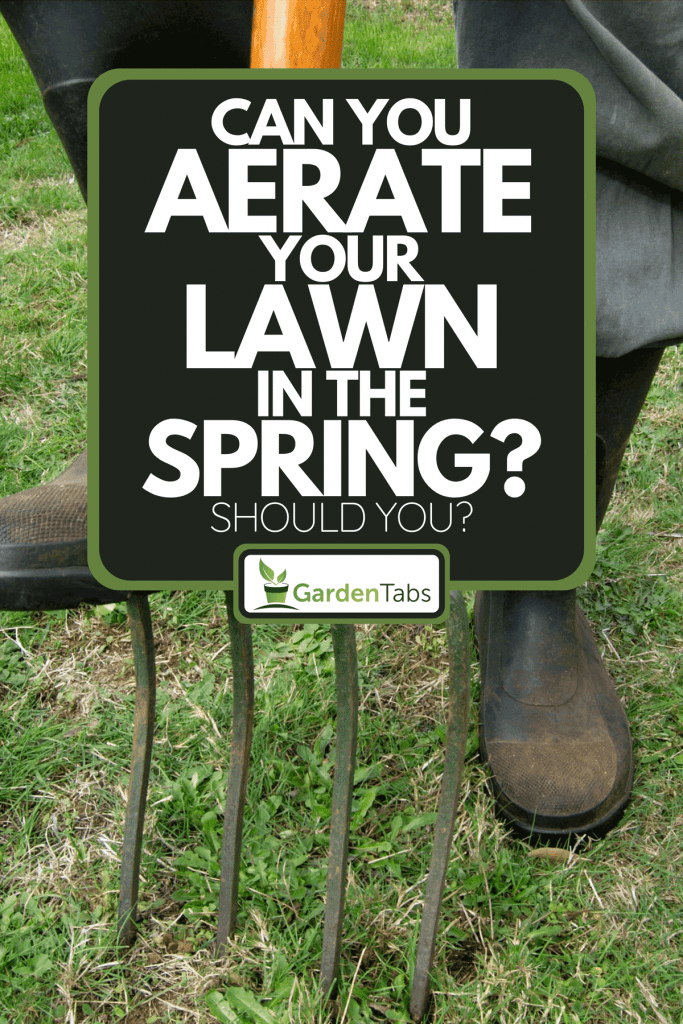
Is It Okay To Aerate Lawn In The Spring?
Yes, you can, and you should aerate your lawn in the spring. Deciding what part of spring, early or late, is the difficult part. Normally, a good rule to follow is to aerate in the early spring for cool seasoned grasses and aerate in the late spring for warm seasoned grasses.
You will want to choose the time when your grass is in its peak growth stage, which differs for each type of grass. This is because the grass will heal from the stress of aeration much better if it is during this peak. Also, you will get the best results when you complete the aeration process at the best time for your particular type of grass.
The best month for you to aerate your lawn is all dependent on this peak period.
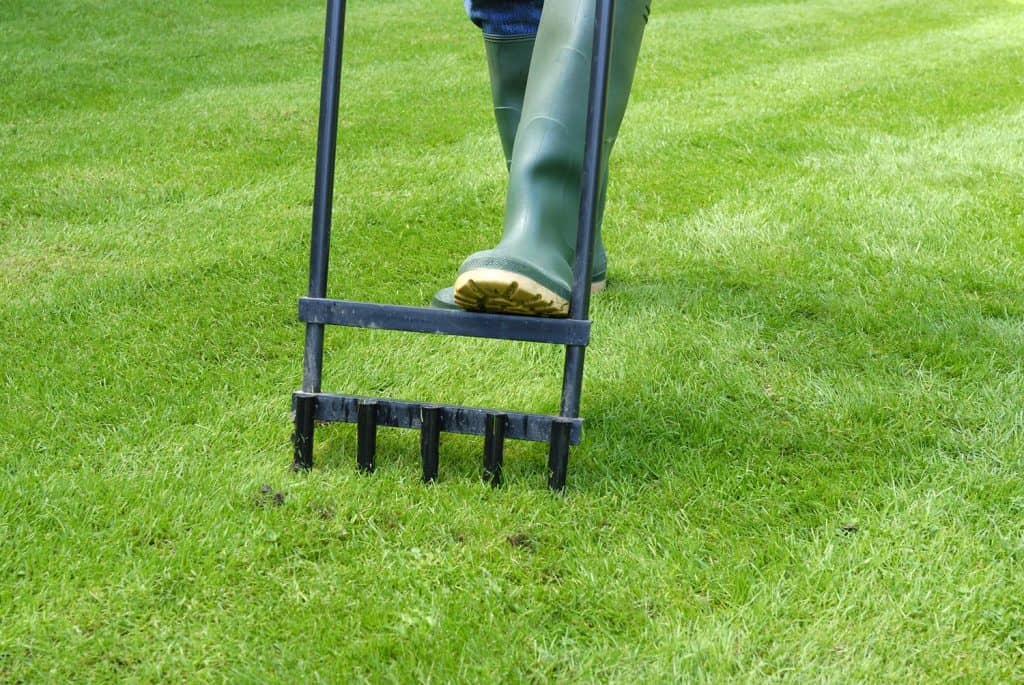
What Is The Best Month To Aerate My Lawn?
If you have warm-season grass growing on your lawn, the peak time to aerate is in the late spring. These types of grasses include Bermudagrass, buffalo grass, St. Augustine grass, and centipede grass, to name a few. Cool-season grasses are best aerated in early spring, such as cat grass, scutch grass, Kentucky bluegrass, and fine fescue.
What Is Aerating And Why Do It?
Aeration is a type of lawn work that allows the roots of your grass to get the air, water, and nutrients it needs to grow healthy. When soil becomes compacted, the grassroots will become deprived of these important needs. Aeration creates holes in the ground that relieve compaction and allow the grass to get the water, nutrients, and air that it so desperately needs to live and grow.
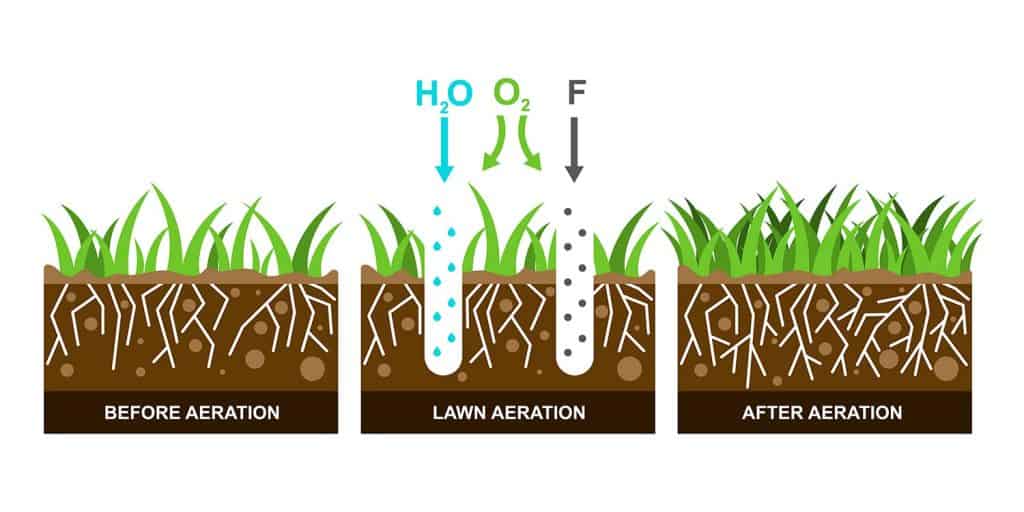
Compaction is caused by many things but mainly by pressure being applied to the ground repeatedly. Whether it is outdoor entertaining, animals or kids running on the lawn, or vehicles being driven on the grass, compaction is a common occurrence.
Compaction is especially common in soil with a heavy presence of clay. When compaction occurs, aeration is needed.
Aeration Techniques And Tools
There are many tools and techniques involved in the process of aeration. The first is core aerators, also known as plug aeration. This technique uses a machine equipped with rows of hollow tubes that remove plugs of soil when dug into the ground.
These plugs will then get deposited back onto the grass to break down and add more organic material and nutrients to the soil. This particular technique has a wide range of sizes for the hollow tubes; therefore, the holes and plugs will vary in size depending on the machine you use.
The second technique of aeration is spike aerating. This is done by poking thin holes into the ground with anything spiky. Usually, this is done with a lawn tool or special shoes made for aerating.
The shoes are an easy choice as they can just be worn while doing regular lawn work, getting two things done at a time. However, this action can cause more compaction with the heavy repeated pressure.
Read this article on how to aerate with spike shoes.
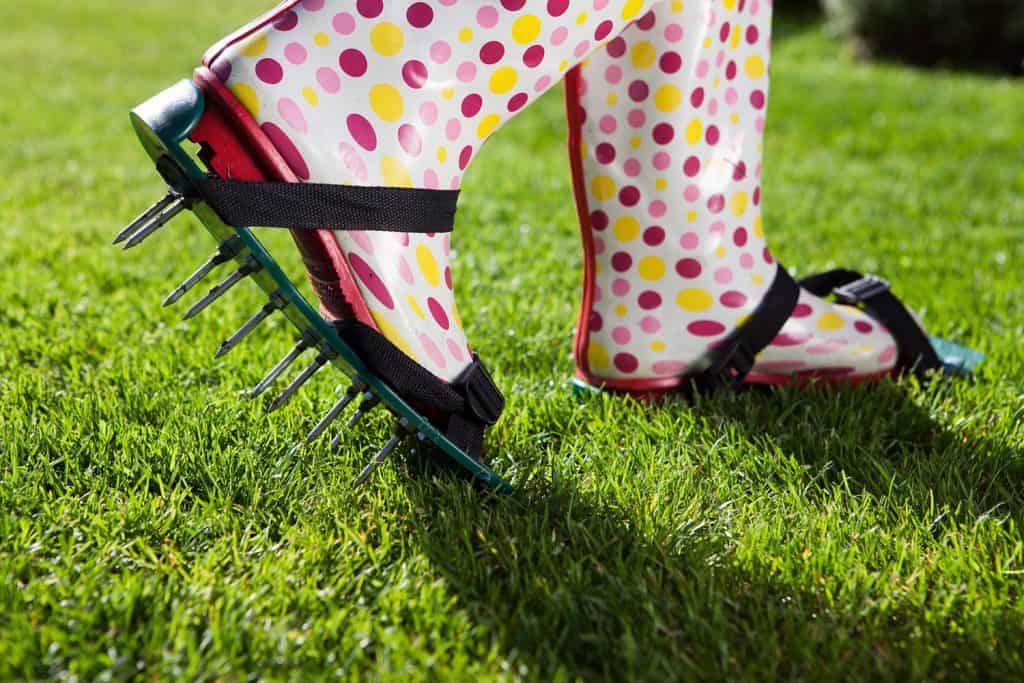
The third and final technique you could use is called slice aerating. This is done with a special tool with rotating blades that will slice through the soil, thatch, and grass. This technique leaves all of the soil behind, creating a path for air, water, and nutrients to get through to the roots.
How Do I Know If My Lawn Needs To Be Aerated?
There are three common signs that your lawn needs to be aerated. The first sign is that your yard is puddling in places that are not common. This shows that the water is not soaking into the grass and soil as it should be, therefore leading to the roots not getting enough water.
The second sign that aeration is needed is if your soil is hard. If you bend down to feel the soil and it is difficult to press. The third and final common sign is if your grass looks unhealthy. Whether the grass is not growing or it is turning brown, aeration is probably needed.
You can use the screwdriver test to check for compaction. To do this, stick a screwdriver (or a finger, stick, or another tool) into the ground. It should be easy to push this tool in. If there is resistance, then aeration is needed because your ground is compacted and not allowing the roots of the grass to get the nutrients and air it needs.
Should I Core Aerate In Spring?
Yes, core aerating or any other techniques should be done in the spring. It is the best time to allow for healing and regrowth for your grass after the stress of aeration.
The only issue that may arise with this chosen time to aerate is that weed seeds can spread throughout your lawn and germinate. This will cause more weeds to grow amongst your grass.
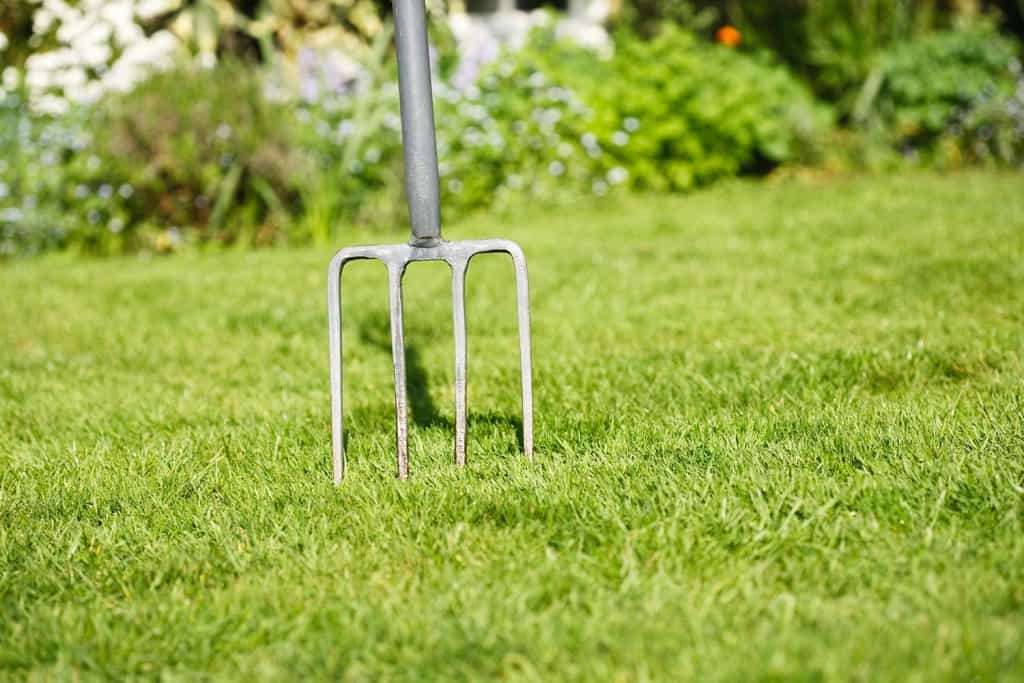
Dethatch Or Aerate First?
Dethatching and aerating go hand in hand, although they are not the same, despite popular belief. Dethatch first, then you can aerate.
Dethatching is used to remove any excess organic matter between the soil and grass. Aerating is then used to reduce compaction and allow for nutrients, air, and water to get to the roots, resulting in healthy root and grass growth.
Check out this article for more information about whether to dethatch or aerate first: Should You Dethatch Or Aerate A Lawn First?
What Is Thatch?
Thatch is an organic layer of decomposing matter that grows on the surface of the lawn, between the grass and the soil. Much like compaction, it deprives the grass of the key things it needs to live. Also, a thick layer of thatch can promote insect infestations as well as diseases of the grass to infect your lawn.
Dethatching is necessary when the thatch accumulates faster than it can break down or grows about an inch or more down into the soil. To prevent thatch build-up, avoid overwatering the grass and avoid fertilizer with high nitrogen levels.
How To Dethatch
Dethatch by using a deep rake and raking while pushing the rake down into the grass to reach the thatch layer. This will break up the thatch and rejuvenate the grass. This action, however, can be stressful on the grass, much like aeration can be. So, in an attempt to keep healthy grass, be sure to give it time to recuperate.
There are specific rakes for dethatching, but any rake will do as long as it can reach the thatch layer to break it up.
Click here to see this thatch and groom rake on Amazon.
Best Time To Aerate And Overseed Lawn?
The best time to aerate and overseed your lawn is in the springtime. Warm-season grasses will get the best results in the late spring. While cool-season grasses will get the best results in early spring.
Be sure the grass is damp but not drowning while aerating and overseeding. Dry soil will be difficult to aerate and will not be a good environment for seed growth. Overly wet lawns will drown the seed, and aeration will just cause your lawn to tear up.
In Closing
The best time to aerate your lawn is in the spring. That is early spring for cool-season grasses and late spring for warm-season grasses. There are many different techniques to choose from and many things to consider, all of which were covered in this article.

